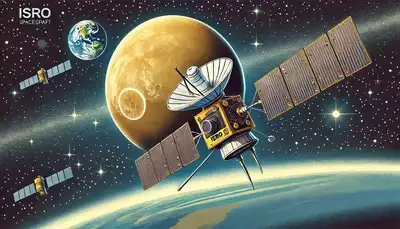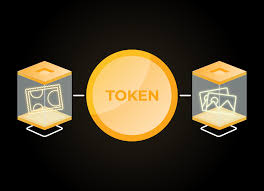Blog Credit : Trupti Thakur
Image Courtesy : Google
The Venus Orbiter Mission
The Union Cabinet chaired by the Prime Minister Shri Narendra Modi has approved the development of Venus Orbiter Mission (VOM), which will be a significant step towards the Government’s vision of exploring and studying Venus, beyond moon and mars.
About VOM
- The Venus Orbiter Mission (VOM),unofficially known as Shukrayaan is a planned Indian Space Research Organisation (ISRO) mission to study the surface and atmosphere of Venus.
- The ‘Venus Orbiter Mission’ to be accomplished by Department of Space is envisaged to orbit a scientific spacecraft in the orbit of planet Venus for better understanding of the Venusian surface and subsurface,atmospheric processes and influence of the Sun on Venusian atmosphere.
Objective
- Investigation of surface process and shallow subsurface stratigraphy.Until now, no prior observation of the sub-surface of Venus has been done.
- Stratigraphy is a branch of geology in which rock layers and layering are studied.
- Study of the structure, composition and dynamics of the atmosphere.
- Investigation of Solar wind interaction with Venusian ionosphere.
Significance
- The study of the underlying causes of the transformation of Venus, which is believed to be once habitable and quite similar to Earth, would be an invaluable aid in understanding the evolution of the sister planets, both Venus and Earth.
- The Indian Venus mission is expected to answer some of the outstanding scientific questions resulting in various scientific outcomes.
Project Details
- Funding : The total fund approved for the Venus Orbiter Mission” (VOM), is 1236 Cr out of which Rs 824.00 Crore will be spent on the spacecraft. The cost includes development and realization of the spacecraft including its specific payloads and technology elements, global ground station support cost for navigation and network as well as the cost of launch vehicle.
- Timeline :The mission is expected to be accomplished on the opportunity available during March 2028. The Indian Venus mission is expected to answer some of the outstanding scientific questions resulting in various scientific outcomes.
- Launched Vehicle : Shukrayaan-I will be launched on either GSLV Mk II (Geosynchronous Satellite Launch Vehicle Mark II) or GSLV Mk III , the latter allowing more instruments or fuel to be carried, according to ISRO.
Expectations for future
- Unique instruments offer the Indian Science community new and valuable science data.
- Involvement of various academic institutions and training to studentsin pre-launch phase that includes design, development, testing, test data reduction, calibration
- EnableIndia for future planetary missions with larger payloads, optimal orbit insertion approaches.
About Venus
- It is the second planet from the Sunand sixth in the solar system in size and mass.
- It is the second brightest natural object in the night sky after the Moon.
- Unlike the other planets in our solar system,Venus and Uranus spin clockwise on their axis.
- It is the hottest planet in the solar systembecause of the high concentration of carbon dioxide which works to produce an intense greenhouse effect.
- A day on Venus is longer than a year. It takes Venus longer to rotate once on its axis than to complete one orbit of the Sun.
- Venus has been called Earth’s twinbecause of the similarities in their masses, sizes, and densities and their similar relative locations in the solar system.
Mission on Venus by other countries
- USA : Mariner series 1962-1974,, Pioneer Venus 1 and Pioneer Venus 2 in 1978, Magellan in 1989
- Russia : Venera series of space crafts 1967-1983, Vegas 1 and 2 in 1985
- Japan :Akatsuki in 2015
- Europe : Venus Express in 2005
Blog By : Trupti Thakur

25
SepThe Venus Orbiter Mission
Sep 25, 2024Recent Blog
The Web Privacy ValidationMay 27, 2025
India’s First Creator LandMay 21, 2025
Tokenization – An Initiative By RBIMay 20, 2025
The BioMetric E-PassportsMay 19, 2025
AI HallucinationsMay 16, 2025




